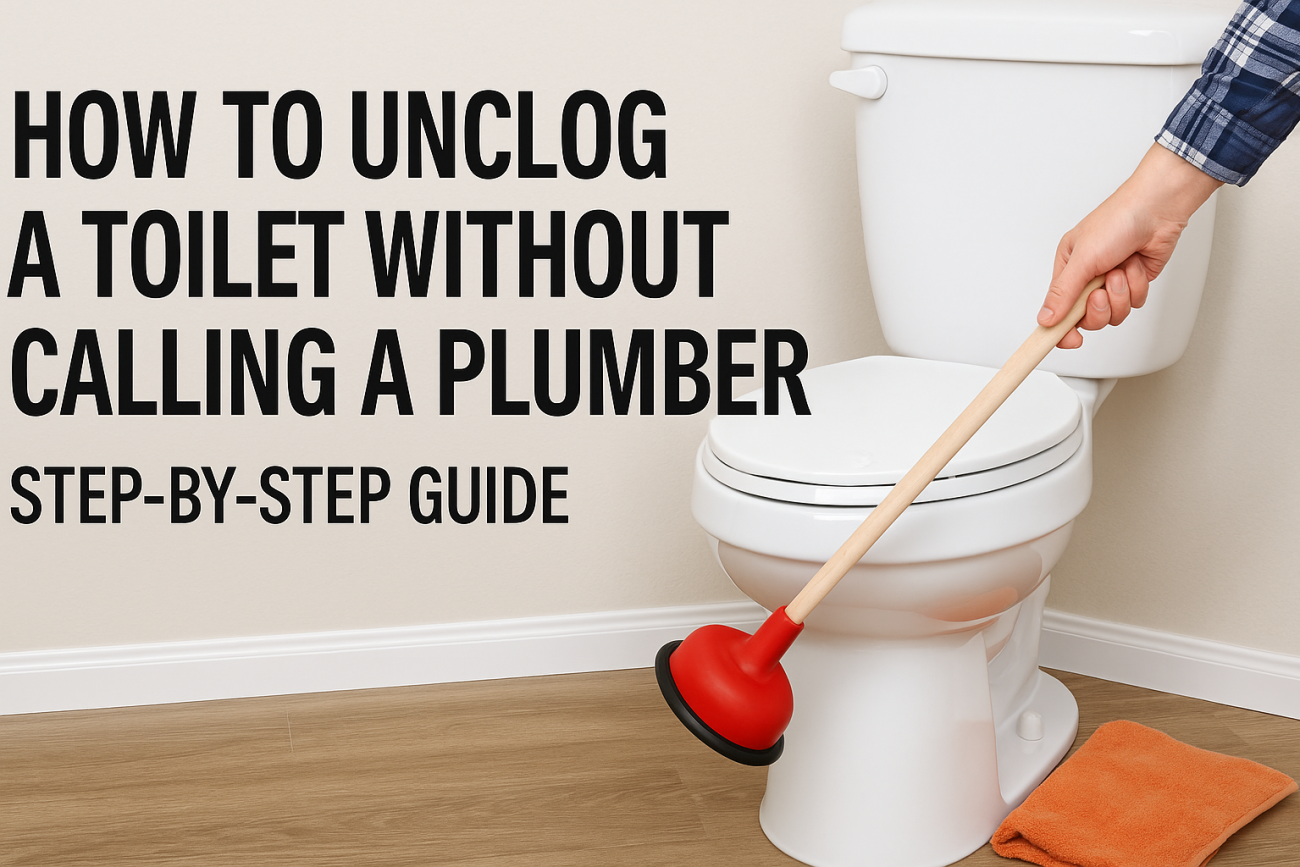A clogged toilet is one of the most common and frustrating household problems. While your first instinct might be to call a plumber, most toilet clogs can be resolved with a few DIY methods using tools and items you likely already have at home. Not only does this save you time, but it also spares you an expensive plumbing bill.
Understanding Common Causes of Toilet Clogs
Before tackling the issue, it is helpful to know why toilets clog in the first place. The most frequent reasons include:
- Too much toilet paper: Using excessive amounts can block the flow of water.
- Foreign objects: Toys, wipes, feminine hygiene products, or other items accidentally dropped in the toilet.
- Low-flow toilets: Older low-flow models sometimes lack the force needed to clear waste effectively.
- Build-up of waste: Gradual accumulation over time can eventually block pipes.
First Steps: Assess the Situation
If you notice the water level rising dangerously close to the edge, resist the urge to flush again. Doing so could cause an overflow and a bigger mess. Instead, follow these steps:
- Do not flush again! Assess water levels and stop any further use.
- Remove excess water: If the bowl is very full, use a small container to scoop out excess water and transfer it to a bucket.
- Protect the area: Place old towels or newspapers around the toilet base to catch any spills.
- Ventilate: Open a window or turn on the bathroom fan to reduce odors.
The Essential Tool: How to Use a Plunger Properly
A plunger is your first line of defense against most toilet clogs. For best results, use a flange plunger (the type with an extension at the bottom) as it creates a better seal.
Step-by-Step Plunging Technique
- Insert the plunger: Make sure there’s enough water in the bowl to cover the plunger head for a tight seal.
- Position correctly: Place the rubber flange into the drain hole, ensuring no air gaps.
- Push and pull: With moderate force, push down and pull up sharply but keep the seal intact. Repeat 10–20 times.
- Check the results: Lift the plunger and see if the water drains. If not, repeat the process.
If the water drains away, your clog has likely cleared. Try flushing once to confirm.
No Plunger? Household Solutions to Unclog Your Toilet
If you don’t have a plunger handy, don’t worry. There are several effective home remedies you can try before resorting to calling a plumber.
Method 1: Hot Water and Dish Soap
- Pour a generous amount of dish soap (about 1/4 cup) into the toilet bowl.
- Heat a bucket of water (not boiling, which could crack the porcelain) to a hot but safe temperature.
- Pour the water from waist height into the bowl. The force and heat help break down the clog.
- Wait 15–20 minutes and check if the water drains. Repeat if necessary.
Method 2: Baking Soda and Vinegar
- Add 1 cup of baking soda to the toilet bowl.
- Slowly pour 2 cups of vinegar in. Fizzing will occur as the mixture works on the blockage.
- Let the solution sit for up to 30 minutes.
- Flush the toilet or pour more hot water to see if the clog has cleared.
Method 3: The Toilet Brush Push
In a pinch, a sturdy toilet brush can sometimes do the trick. Insert the bristle end into the drain hole and push down with some force. This can break up or move the obstruction enough to allow water to flow.
Other DIY Tools and Techniques
For persistent clogs, there are additional DIY solutions you can attempt before calling a professional:
Using a Plumbing Snake (Auger)
- Insert the flexible end into the toilet drain and slowly push while turning the handle.
- Keep turning until you feel resistance, indicating the clog.
- Push and pull gently to break up or retrieve the blockage.
- Remove the snake and flush to clear the drain.
If you don’t have a plumbing snake, a straightened wire coat hanger (with a small fabric swatch on the end to prevent scratches) can be a makeshift alternative.
What Not to Do When Unclogging a Toilet
- Do not use chemical drain cleaners: Many are too harsh for toilets and can damage porcelain or plumbing pipes. They also may not dissolve organic blockages effectively.
- Do not keep flushing repeatedly: This could cause an overflow and worsen the situation.
- Do not use excessive force: Aggressive plunging or pushing can damage the toilet bowl or pipe connections.
Preventing Future Toilet Clogs
Prevention is always better than cure. Consider these steps to minimize future blockages:
- Use less toilet paper or flush between uses if necessary.
- Do not flush non-flushable items like wipes, feminine products, or paper towels.
- Educate children about proper toilet use and what not to flush.
- Regular maintenance: Occasionally using baking soda and vinegar can help keep pipes clear.
When to Call a Plumber
If you have tried all the above methods and your toilet remains clogged, there could be a more serious issue such as a deep blockage, tree root invasion, or a sewer line problem. In these cases, do not hesitate to call a licensed plumber.
Conclusion
Unclogging a toilet without calling a plumber is often straightforward with the right techniques and a little patience. By following the steps outlined above, you can resolve most clogs quickly, save money, and gain confidence in your DIY home maintenance skills. Just remember to use tools properly, avoid harsh chemicals, and practice preventative care to keep your toilet running smoothly.
